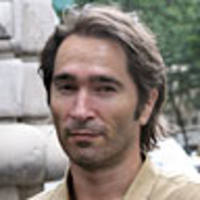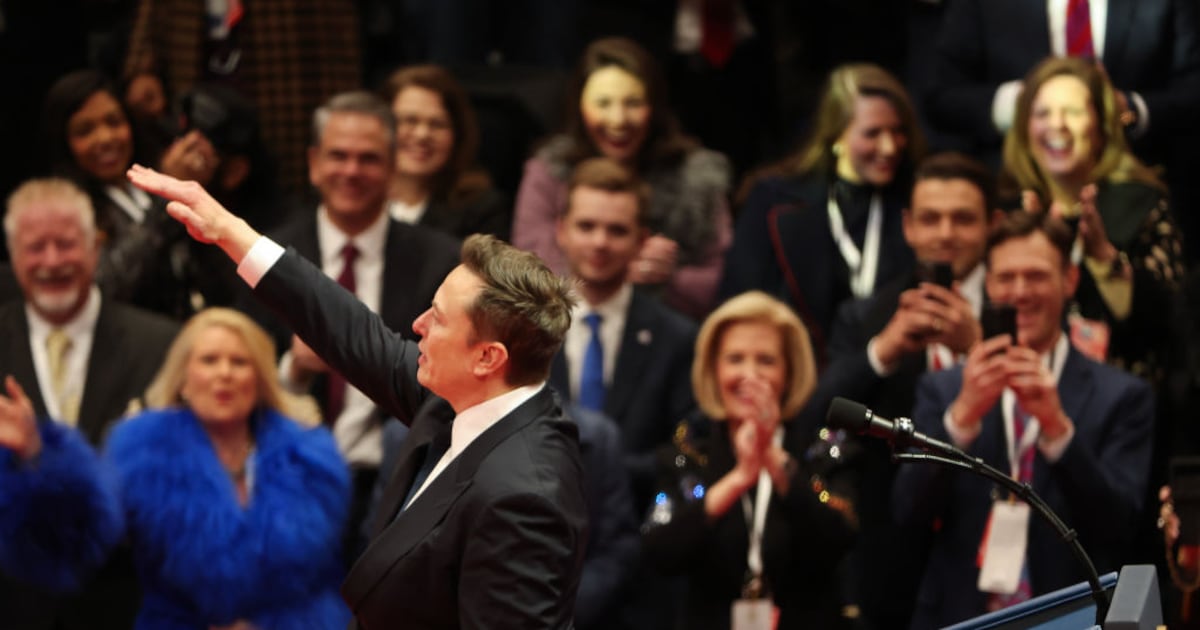Given France’s nearly sacred respect for art, even—or especially—when it is sexually provocative, the nation’s culture mavens have almost never treated it like hardcore pornography.
And yet that is what they’ve done with a new exhibit by post-adolescence-obsessed American photographer-turned-filmmaker Larry Clark, whose photographs often deal with raw moments of young people who might be deemed barely legal, at best.
GALLERY: Larry Clark's XXX Photos

The City of Paris has decided that people under 18—some of whom might have been Clark’s subjects a generation or two ago—will not be permitted to view his first French retrospective, Kiss the Past Hello. The exhibition, which consists of 200 pictures that he snapped over the last half-century, runs from October 8 into the New Year at the Musée d’Art Moderne of Paris. In other words, a branch of the municipality of the French capital decided to give an exhibit that it is hosting the equivalent of an X-rated stamp.
“You can’t show images that are disturbing to minors,” explained the exhibit’s curator, Sébastien Gokalp, “so we banned them from attending.”
Paris’ influential Green party blasted the decision as an “excess of prudence” that sets a “dangerous precedent” of artistic censorship. (The Green party alternative would be a simple sign at the entrance to the Clark exhibit, warning of the violent and sexually explicit character of certain photos.) Clark himself was quoted in Le Monde as saying the ban should be flipped, allowing younger people and forbidding older ones.
So what keeps people under 18 from seeing photographs in a proud artistic nation that has for centuries offered up naked chests, fesses, and loins on public statues, in countless paintings, and in erotic library books? (And that’s not to mention the fleshy bounty found in or on French billboards, mainstream magazines, and free television.)
Interestingly, in the art world there is no formal and clearly defined rule about how to deal with this issue. Art that is expected to shock the sensibilities of some viewers in France is often cordoned off from the rest of an exhibit by a red peep show-style curtain with a sign flagging particularly violent or sexual content.
But, as Gokalp explained, “Larry Clark deals with sex and violence mixed with joy and pleasure. We would have had to separate almost the entire collection.”
French film censors are sensitive about graphic footage of people shooting drugs or realistic violence, while particularly graphic soft-core sex scenes often lead to a 16-and-over film or (suggested) television rating. But what normally boosts a film, cable television show or other up to an X-rating generally only comes from one thing: un homme en erection.
“An X-rating generally only comes from one thing: un homme en erection.”

In Clark’s case, things are a bit more complicated. The retrospective includes compelling photos of everything from harmless baby pictures (that he cut his photographic teeth snapping as a teenager) to bravado-laced pictures of teen or young-adult posers (including a few with guns), but those pictures would not normally make it behind the red curtain. And other artists have certainly shown photos dealing with young people shooting hard drugs and every manner of nudity; it is France, after all. The questions begin to arise from his in-the-act sex photographs, sometimes with multiple partners.
And, as is often the case with Clark’s films—like Kids and Ken Park—some viewers believe that certain subjects of his photos look like they might be between 15 and 18, with the implication being that he is providing fodder for pedophiles.

“I can see why people ask questions. These are very sensitive, very controversial topics. But he is not a predator, not someone who consumes,” said Gokalp, who insisted that the artist has focused on young adults throughout his long career. “Picasso said that a great artist invents a subject, and Larry Clark has done that. His subject is the passage from, and the rites of, adolescence. It is about becoming a man. Whether he is 20 or 50 (when he takes the photographs), that is his subject.”
Only a small handful of art exhibits in France have faced age-related limitations over sensitive content. A 16-and-over 2007 exhibition entitled, “ L’Enfer” (“Hell”) at the National Library: “ eros in secret,” brought together a massive collection of never-before seen erotica and artistic pornography from the French State’s huge collection. (The exhibit drew mostly from the 17th through 19th centuries but included an explicit photograph by Man Ray of an act of fellatio.)
At the Lyon Biennale of 2007, soft-core photos by David Hamilton were sheltered from the eyes of minors because many of the subjects of his soft-lit nudes seem to be underage.
If France’s art world is restraining certain traditions of expression, it can largely be traced to the 2000 exhibition in Bordeaux, " Présumés innocents. L'art contemporain et l'enfance”— Presumed Innocent: Contemporary Art and Childhood. That exhibit, which used intense Mapplethorpe-like imagery, asked whether children are really as innocent as they appear, spurring a “socially conservative” organization to file a legal complaint that resulted in an indictment of the exhibit’s curators and others. The legal saga continues to this day—and unlike the U.S., that is a rarity in less-litigious France. Much of the French art world views the tale as a wake-up call. It isn’t that curators are afraid of shocking content; they are concerned about protracted lawsuits.

In the midst of the Presumed Innocent case, the government passed a 2007 law for the protection of children that made it illegal to “produce, transport, diffuse by any means whatsoever…a message with a violent or pornographic character, or that is of a nature that can seriously undermine human dignity.” This law inspired Paris’ precautions for Clark, like publishing the retrospective’s catalogue in London (by Clark’s gallery), apparently to avoid legally exposing the exhibition’s hosts for distributing disturbing content. (Some in the French art world point to the irony that James Joyce and Oscar Wilde once published in France to avoid censorship at home.)
Culture representatives in Paris say that their goal was to find a solution that wouldn’t “affect the integrity of the oeuvre or of the artist.”
Is anyone involved with the exhibit worried about creepy adult art goers attending in search of graphic images of minors, whether they are there or not?
“People aren’t going to pay, stand in line and go into a museum to see stuff to excite themselves,” says the curator. “They can do that on the Internet.”
Plus: Check out Art Beast, for galleries, interviews with artists, and photos from the hottest parties.
Eric Pape has reported on Europe and the Mediterranean region for Newsweek Magazine since 2003. He is co-author of the graphic novel Shake Girl, which was inspired by one of his articles. He has written for the Los Angeles Times magazine, Spin, Reader's Digest, Vibe, Courrier International, Salon, and Los Angeles from five continents. He is based in Paris. Follow him at twitter.com/ericpape






